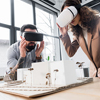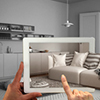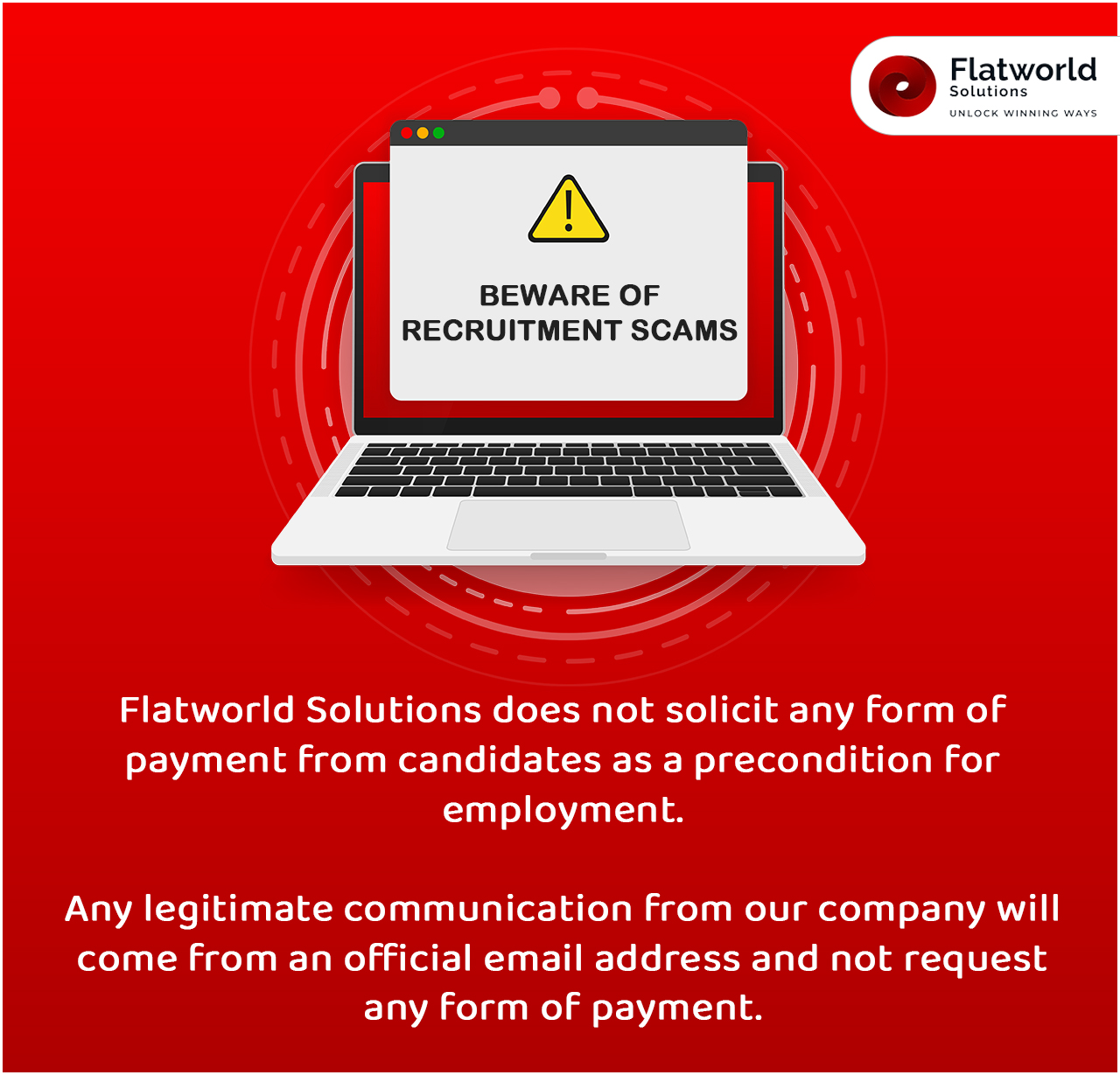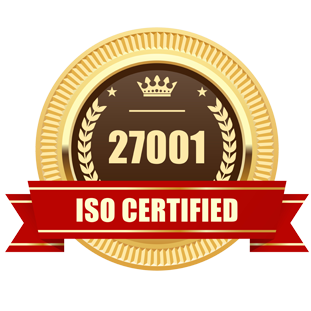Architecture is a discipline which responds and predicts the nature of the world we live in. From the snow-capped art nouveau buildings in the fjords of Iceland to the desert towers of Dubai, architecture aims to remain relevant, useful, and more importantly, reflect the aesthetics of the surroundings. Without its evergreen nature, architecture will fail to inspire or evolve, as it has over the past century.
Architects, by the nature of their profession, are dreamers first. They draw on sketchbooks, on paper and napkins, and then move to computer-aided architectural drafting and detailing, in what is an extremely visual process in nature. Therefore, there is a gap between the mental world in which the architects design first and the physical world where they eventually build.
Bridging the Gap with Haptics in Architectural Engineering
Many scientists and elevated architects have proposed the importance of touch in architecture. Touch is the sensory mode that helps to integrate the experiences that we think of to the world we want to see around us. Architecture and design have always strived to provide tactile experiences to people, but the sense of touch itself has never been a primary focus, until now.
Experts argue that by incorporating the sense of touch into the architectural design process, one can make creations which are more user-friendly, have less distorted spaces, and remain more accessible in terms of scope.
What are the Principles For Haptic Design in Architecture?
The sense of touch, or haptics, is something we rely on continuously, in ways we don't realize. Thousands of nerve endings in our skin, muscles and organs continuously relay outside information in the form of sensations. Today, engineers around the world are working on realistic haptic sensations for human-computer interactions and has shown great promise in the field of video games and mobile phones. The tiny vibrations when you use your touchscreen is nothing but haptics! Engaging improved touch feedback is a cornerstone in tech which is being explored heavily now, including in fields such as robotic control, physical rehabilitation, distance education, route navigation, distance communication, etc.
As such, the role of haptics in architectural engineering cannot be overstated. Let's have a look at the basic tenets of haptics -
-
Make it simple - Focus on delivering quality amount of feedback at the right time
-
Respond to every user action - Feedback should be fast and be directly related to user action
-
Remain consistent for each action - Tactile interfaces are more abstract than visual ones, so consistency should be maintained to train the user easily
-
Give some, and take some - Haptic input and output should be considered together for the entire thing to work
-
Approach in a holistic manner - Multi-sensory based experiences through haptics can improve reaction time, tasks, and mental learning
-
Learn from nature - the ideal haptics-based design learns from the natural rules of touch and expand senses beyond conventional arrangements
-
Chart human interactions - Haptic experiences should be mapped to the human body, and vary for different tactile interactions
-
Maintain a consistent illusion - Digital illusions are difficult to maintain and is one of the main reasons why haptics in engineering has taken so long to establish itself. Today's haptics need to build on realism
-
Build bonds - Users should be able to express their emotions and build bonds using the said haptics
-
Address human requirements - Haptics should target solving basic needs first, and should have a direct impact on the people using it
The Role of Haptics in Architectural Engineering
Over the years, a variety of other sensing technologies have been researched and developed, but Haptics is definitely the most promising among them. Haptic systems in architecture modeling today have unprecedented possibilities including multiple applications for touch-enhanced surfaces and spaces.
-
Immersive Virtual Reality

Immersive VR applications for architecture are immeasurable. VR and AR are catching up not only in the consumer space, but also in B2B applications including finding their way into architecture studios. There are many companies with VR tech which can translate complex architectural models into an immersive VR experience. This can then be viewed using a VR headset. But it doesn't stop there.
Architects will soon be able to "place" their clients inside the VR environment where they can experience the entire model in a more interactive manner through dedicated haptics in architectural design. With this more client will be able to grasp spatial qualities, build textures etc. and feel more immersive than simple non-interactive designs. This would further allow better perception and feedback for architects, while they literally feel the effect of the entire model through touch.
-
Augmented Reality through Mid-Air Haptic Feedback

Augmented-Reality (AR) leverages head-mounted displays or HMDs to create an immersive virtual visualization in the users' field of vision. One of the primary drawbacks of AR has been the lack of interaction, which mainly is based on gesture and voice controls, but have limited realism and avenues for expression.
By integrating haptics within AR one can now deliver an enriched user experience, while facilitating specific actions which directly result in touch feedback. This haptic feedback can be generated via multiple devices such as wearables or mi-air ones, which are finding exceptional acceptance in the world of architecture.
-
Haptics-based Modeling

While still a nascent technology, haptics are being utilized for virtual arts and architectural modeling which utilizes a combination of sound, visuals, and animation. The haptic machine permits the architect to have immediate contact with a set of virtual tools with which he can create these models.
This high-level of flexibility brought to life because of haptics based gadgets allow one to identify with the surfaces they are creating, allowing for speedier modeling than usual techniques.
-
Ultrahaptics-based Architectural Solutions

This cutting-edge ultrasound technique creates rich shapes and textures in 3D which can be felt but remain unseen. This is one of the key trends of haptic architecture & design which can add tactile characteristics to many virtual objects as well as holographic interfaces. When users interact with these surfaces, they feel a natural haptic feedback which directly translates into the surface reacting to their touch.
-
Better Designs

One of the key takeaways for haptics in architectural design is that associated design tools will get more complex down the line, enabling architects to automate time consuming tasks and improve overall presentation. The result has this in turn will lead to better productivity, fewer miscalculations, and more creativity.
Challenges in Implementing Haptics in Architectural Engineering
One of the key challenges for the implementation of haptic technology is how young the technology still is. Which scientists and researchers are finding new ways to implement haptics in different fields, architecture is one field where the technology still faces some challenges?
Let us have a look at some of them -
-
Latency
The realism that haptic feedback provides can be badly affected by slow update rates and internet connections. This is especially the case when extreme computation times are required for large scale architecture projects. Real-time rendering therefore still can get affected by delays and lag, as well as network congestion.
-
Contact Detection
One of the key fundamental problems in haptics is that contact detection between virtual objects and the haptic gadget sometimes fails. For the contact to be reliably detected, a lot of things need to be in place which sometimes might not remain functional. In architecture, this can lead to significant delays in the design or modeling process. In the future, with the technology becoming more ubiquitous, contacts can be detected more reliably and rendered using the probe.
-
Force Feedback
Force feedback in haptics is exceptionally important, and there are two main requirements that drive this particular factor - high fidelity rendering and render stability. But one of the main problems is that both these factors are analogous to each other in the way they conflict in operations. High fidelity haptic rendering generally needs higher force feedback gains which in turn can lead to and instability.
-
Haptic Data Compression
Haptic data compression is a key architects challenge to include haptics. There is massive data loss in current haptic data compression techniques which in turn can render an entire project worthless unless dealt with from the start. Data related to the user's interaction with his virtual environment is continuously refreshed and manipulated based upon input. If the haptic data generated is too bulky relative to the available bandwidth and resources, there will be a large-scale difference between what the user feels and what he sees on screen.
Flatworld Solutions - Building the Future of Architecture with Cutting-edge Solutions
At FWS, we have been at the forefront of implementing new technologies that drive innovation in architecture and building design. Over the years, we have helped clients across the globe embrace the power of technology in the form of virtual reality, drone mapping, 3D-printing, AI, ML and Big Data-driven analytics.
While haptics in architectural design might seem like a flight of fancy today, it will soon be possible to feel surfaces and objects in virtual architectural renders which in turn will lead to more informed decision making and a more immersive experience for the clients. In order to know more about our architectural services, contact us now!
Contact UsAvail best-in-class services at affordable rates
Our Customers





Key Differentiators
Case Studies
-
Flatworld Solutions provided customized CNC programming using MasterCAM
-
Flatworld Provided CFD Simulation Services to a Leading HVAC Products Manufacturer
-
Flatworld Solutions Offered Mechanical Instrument Drafting and Detailing Services to an Engineering Consultant
-
Flatworld Solutions Offered US Client with 2D to 3D Mechanical Legacy Drawing Conversion
-
Flatworld Solutions Provided Reverse Engineering of Machine Parts to a Client
Join the growth phase at Flatworld Solutions as a Partner
Service distributorship and Marketing partner roles are available in select countries. If you have a local sales team or are a person of influence in key areas of outsourcing, it's time to engage fruitfully to ensure long term financial benefits. Currently business partnerships are open for Photo Editing, Graphic Design, Desktop Publishing, 2D and 3D Animation, Video Editing, CAD Engineering Design and Virtual Walkthroughs.
Reach out to us for a quick direct response from decision makers at the Flatworld Solutions global team.

USA
Flatworld Solutions
116 Village Blvd, Suite 200, Princeton, NJ 08540
PHILIPPINES
Aeon Towers, J.P. Laurel Avenue, Bajada, Davao 8000
KSS Building, Buhangin Road Cor Olive Street, Davao City 8000
INDIA
Survey No.11, 3rd Floor, Indraprastha, Gubbi Cross, 81,
Hennur Bagalur Main Rd, Kuvempu Layout, Kothanur, Bengaluru, Karnataka 560077



